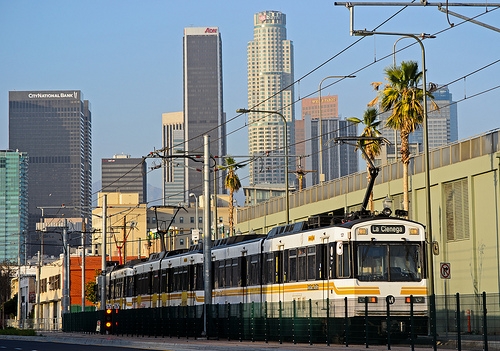View slides
The video begins at 6:57.
The Tri-County Metropolitan Transportation District of Oregon (TriMet), the transit provider for urban Clackamas, Multnomah, and Washington Counties, has been a leader in applying ITS technologies to its operations since the mid-1990s. The use of ITS technology has enhanced service for its customers while providing significant operational efficiencies.
In this presentation, analyst David Crout will describe many of TriMet's ITS projects, including the automatic vehicle location (AVL) system, computer-aided dispatch (CAD), real-time customer information, transit signal priority, and automatic stop announcements, and show how they have resulted in improved service and cost savings for the agency.

